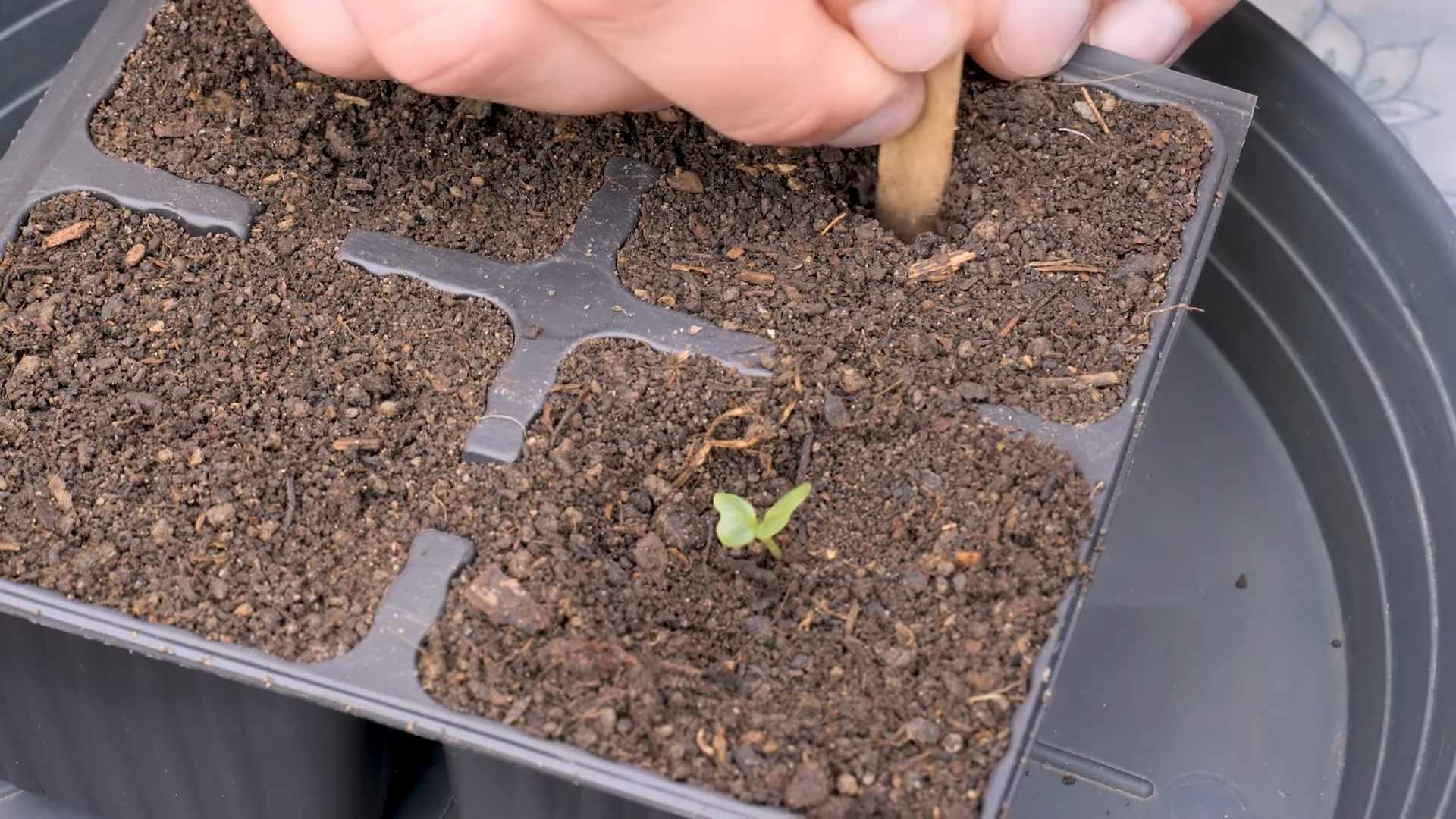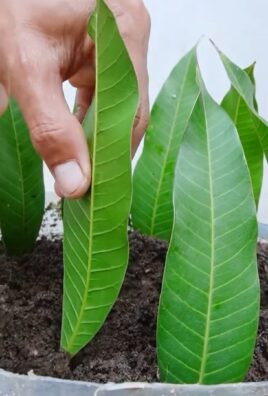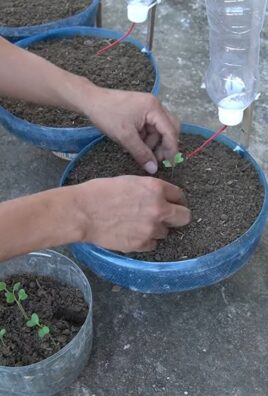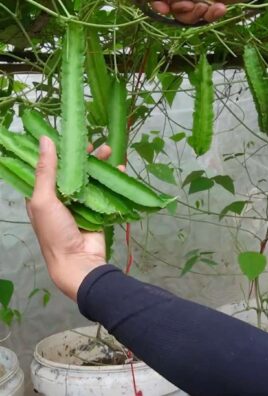Grow Romanesco Cauliflower Seeds: Ever dreamt of harvesting those mesmerizing, fractal-patterned heads of Romanesco cauliflower right from your own backyard? I know I have! This unique vegetable, with its vibrant green color and otherworldly appearance, isn’t just a feast for the eyes; it’s also packed with nutrients and boasts a delicious, slightly nutty flavor.
While Romanesco cauliflower might seem like an exotic delicacy reserved for fancy restaurants, I’m here to tell you that growing it yourself is totally achievable, even for beginner gardeners! Think of the bragging rights – and the delicious meals – you’ll enjoy. The history of Romanesco cauliflower is a bit of a mystery, but it’s believed to have originated in Italy sometime in the 16th century. Since then, it has captivated chefs and gardeners alike with its stunning visual appeal and unique taste.
Why should you embark on this gardening adventure? Well, for starters, store-bought Romanesco can be pricey and sometimes hard to find. But more importantly, growing your own allows you to control the entire process, ensuring you’re enjoying fresh, organic produce free from harmful pesticides. Plus, there’s nothing quite like the satisfaction of nurturing a plant from seed to harvest. In this DIY guide, I’ll share my tried-and-true tips and tricks for successfully grow Romanesco Cauliflower Seeds, from selecting the right seeds to protecting your precious plants from pests. Get ready to transform your garden into a Romanesco wonderland!

Growing Romanesco Cauliflower: A DIY Guide from Seed to Harvest
Hey there, fellow gardening enthusiasts! I’m so excited to share my experience growing Romanesco cauliflower. This vegetable is not only delicious but also a stunning geometric masterpiece in your garden. It might seem intimidating at first, but trust me, with a little patience and these simple steps, you’ll be harvesting your own beautiful Romanesco heads in no time.
Understanding Romanesco Cauliflower
Before we dive in, let’s talk a bit about Romanesco. It’s a type of cauliflower, but its vibrant green color and fractal shape make it truly unique. It has a slightly nutty, milder flavor than regular cauliflower, which I personally love. It’s also packed with vitamins and nutrients, making it a healthy and visually appealing addition to your meals.
Getting Started: Seeds and Supplies
First things first, you’ll need to gather your supplies. Here’s what I recommend:
* **Romanesco Cauliflower Seeds:** Choose a reputable seed supplier for the best germination rates. I’ve had good luck with seeds from Baker Creek Heirloom Seeds and Johnny’s Selected Seeds.
* **Seed Starting Trays or Pots:** These will be used to start your seeds indoors. I prefer using trays with individual cells to minimize root disturbance when transplanting.
* **Seed Starting Mix:** This is a light, sterile soil mix specifically designed for starting seeds. Don’t use garden soil, as it can be too heavy and may contain diseases.
* **Grow Lights (Optional but Recommended):** If you don’t have a sunny windowsill, grow lights will provide the necessary light for your seedlings.
* **Watering Can or Spray Bottle:** For gentle watering.
* **Garden Soil:** A well-draining, fertile soil is crucial for growing healthy Romanesco.
* **Compost or Aged Manure:** To enrich the soil and provide essential nutrients.
* **Fertilizer:** A balanced fertilizer formulated for vegetables.
* **Gardening Gloves:** To protect your hands.
* **Trowel or Shovel:** For transplanting.
* **Row Covers (Optional):** To protect your plants from pests and extreme weather.
Starting Your Seeds Indoors
Romanesco cauliflower needs a long growing season, so starting your seeds indoors is essential, especially if you live in a colder climate. I usually start my seeds about 6-8 weeks before the last expected frost.
1. **Prepare Your Seed Starting Trays:** Fill your seed starting trays or pots with seed starting mix. Gently tap the trays to settle the mix.
2. **Sow the Seeds:** Make a small indentation (about ¼ inch deep) in the center of each cell or pot. Place 2-3 seeds in each indentation. This increases the chances of at least one seed germinating.
3. **Cover the Seeds:** Gently cover the seeds with seed starting mix.
4. **Water Thoroughly:** Water the trays or pots gently with a watering can or spray bottle. Make sure the soil is moist but not waterlogged.
5. **Provide Light and Warmth:** Place the trays or pots under grow lights or on a sunny windowsill. Romanesco seeds germinate best at temperatures between 65-75°F (18-24°C).
6. **Maintain Moisture:** Keep the soil consistently moist by watering regularly. Check the soil moisture daily and water when the top inch feels dry.
7. **Thin the Seedlings:** Once the seedlings have emerged and have a couple of true leaves (the second set of leaves), thin them to one seedling per cell or pot. Choose the strongest, healthiest seedling and gently snip off the others at the soil line.
Preparing the Garden Bed
While your seedlings are growing indoors, it’s time to prepare your garden bed. Romanesco cauliflower needs a sunny location with well-draining soil. I aim for at least 6 hours of direct sunlight per day.
1. **Choose a Sunny Location:** Select a spot in your garden that receives at least 6 hours of direct sunlight per day.
2. **Prepare the Soil:** Remove any weeds, rocks, or debris from the garden bed.
3. **Amend the Soil:** Amend the soil with compost or aged manure to improve its fertility and drainage. I usually add a generous layer (about 2-3 inches) of compost and work it into the top 6-8 inches of soil.
4. **Check the Soil pH:** Romanesco cauliflower prefers a soil pH between 6.0 and 7.0. You can test your soil pH using a soil testing kit. If your soil is too acidic, you can add lime to raise the pH. If it’s too alkaline, you can add sulfur to lower the pH.
5. **Water the Soil:** Water the prepared garden bed thoroughly to settle the soil.
Transplanting Your Seedlings
Once your seedlings have developed several sets of true leaves and the weather has warmed up (after the last expected frost), it’s time to transplant them into the garden.
1. **Harden Off the Seedlings:** Before transplanting, you need to harden off the seedlings to acclimate them to outdoor conditions. This involves gradually exposing them to sunlight and cooler temperatures over a period of 7-10 days. Start by placing the seedlings outdoors in a sheltered location for a few hours each day, gradually increasing the amount of time they spend outdoors.
2. **Choose a Cloudy Day:** Transplant your seedlings on a cloudy day or in the late afternoon to minimize stress.
3. **Dig Holes:** Dig holes in the prepared garden bed that are slightly larger than the root balls of the seedlings. Space the holes about 18-24 inches apart.
4. **Remove the Seedlings:** Gently remove the seedlings from their trays or pots. Be careful not to damage the roots.
5. **Plant the Seedlings:** Place the seedlings in the holes and backfill with soil. Make sure the top of the root ball is level with the soil surface.
6. **Water Thoroughly:** Water the transplanted seedlings thoroughly.
7. **Apply Mulch:** Apply a layer of mulch around the plants to help retain moisture, suppress weeds, and regulate soil temperature. I like to use straw or shredded leaves.
8. **Protect from Pests:** If you’re concerned about pests, you can cover the plants with row covers.
Caring for Your Romanesco Cauliflower
Once your Romanesco cauliflower plants are in the ground, it’s important to provide them with proper care to ensure a successful harvest.
1. **Water Regularly:** Romanesco cauliflower needs consistent moisture, especially during hot, dry weather. Water deeply and regularly, aiming to keep the soil consistently moist but not waterlogged. I usually water every 2-3 days, depending on the weather.
2. **Fertilize Regularly:** Feed your Romanesco cauliflower plants with a balanced fertilizer every 2-3 weeks. Follow the instructions on the fertilizer package.
3. **Weed Regularly:** Keep the garden bed free of weeds, as they can compete with the Romanesco cauliflower plants for nutrients and water.
4. **Monitor for Pests and Diseases:** Keep an eye out for pests and diseases. Common pests that affect Romanesco cauliflower include cabbage worms, aphids, and flea beetles. Common diseases include clubroot and black rot. If you notice any signs of pests or diseases, take action immediately. I prefer using organic pest control methods whenever possible.
5. **Blanching (Optional):** Some gardeners blanch their Romanesco cauliflower heads to keep them white. This involves tying the outer leaves together over the developing head to block out sunlight. However, Romanesco cauliflower is naturally green, so blanching is not necessary.
Harvesting Your Romanesco Cauliflower
Romanesco cauliflower is typically ready to harvest about 75-85 days after transplanting.
1. **Check for Maturity:** The head should be firm and compact, with tightly packed florets. The size of the head will vary depending on the variety, but it should be at least 6-8 inches in diameter.
2. **Cut the Head:** Use a sharp knife to cut the head from the plant, leaving a few inches of stem attached.
3. **Store Properly:** Store the harvested Romanesco cauliflower in the refrigerator for up to a week.
Troubleshooting
Even with the best care, you might encounter some challenges while growing Romanesco cauliflower. Here are a few common problems and how to address them:
* **Buttoning:** This is when the plant produces small, premature heads. It’s often caused by stress, such as lack of water or nutrients. Make sure to water and fertilize your plants regularly.
* **Clubroot:** This is a soilborne disease that causes swollen, distorted roots. It can be prevented by improving soil drainage and avoiding planting in the same location year after year.
* **Cabbage Worms:** These are green caterpillars that feed on the leaves of cabbage family plants. They can be controlled with Bacillus thuringiensis (Bt), an organic insecticide.
* **Aphids:** These are small, sap-sucking insects that can weaken plants. They can be controlled with insecticidal soap or neem oil.
Enjoying Your Harvest

Conclusion
So, there you have it! Growing Romanesco cauliflower seeds might seem a little daunting at first, but with the right preparation, a little patience, and these simple steps, you can cultivate your own crop of these stunning, fractal vegetables. This isn’t just about growing a vegetable; it’s about experiencing the wonder of nature’s artistry firsthand. Imagine the satisfaction of harvesting your own Romanesco, knowing you nurtured it from a tiny seed to a culinary masterpiece.
Why is this DIY trick a must-try? Because it empowers you to control the entire process, from seed selection to harvest. You can choose organic, heirloom varieties, ensuring the highest quality and flavor. Plus, it’s incredibly rewarding to witness the transformation from seed to plate. Forget the bland, mass-produced vegetables at the grocery store; growing your own Romanesco cauliflower seeds allows you to enjoy a truly unique and flavorful experience.
Don’t be afraid to experiment! Consider these variations:
* Succession Planting: Plant seeds every few weeks to ensure a continuous harvest throughout the growing season.
* Companion Planting: Plant alongside herbs like rosemary and thyme to deter pests and enhance flavor. Marigolds are also excellent companions for pest control.
* Container Gardening: If you have limited space, try growing Romanesco in large containers. Just ensure they have adequate drainage and are placed in a sunny location.
* Different Varieties: While Romanesco is the star, explore other unique cauliflower varieties like purple or orange cauliflower for added color and nutritional benefits.
Growing Romanesco cauliflower seeds is more than just a gardening project; it’s an investment in your health, your culinary creativity, and your connection to nature. It’s a chance to learn, to experiment, and to enjoy the fruits (or rather, vegetables!) of your labor. We strongly encourage you to give it a try. You might be surprised at how easy and rewarding it can be.
Once you’ve harvested your beautiful Romanesco, don’t forget to share your experience! Post photos of your garden and your culinary creations on social media using #GrowYourOwnRomanesco. We’d love to see your progress and hear your tips and tricks. Let’s build a community of Romanesco enthusiasts!
Frequently Asked Questions (FAQ)
Q: How long does it take to grow Romanesco cauliflower from seed?
A: Romanesco cauliflower typically takes between 75 and 100 days to mature from seed to harvest. This timeframe can vary depending on the specific variety, your climate, and growing conditions. Starting seeds indoors 6-8 weeks before the last expected frost can give you a head start and shorten the overall growing time. Be patient and monitor your plants regularly for signs of maturity.
Q: What are the ideal growing conditions for Romanesco cauliflower?
A: Romanesco cauliflower thrives in full sun, requiring at least 6 hours of direct sunlight per day. The soil should be well-draining, fertile, and rich in organic matter. A slightly acidic to neutral pH (around 6.0 to 7.0) is ideal. Consistent watering is crucial, especially during dry periods. Avoid overhead watering, which can lead to fungal diseases. Mulching around the plants helps retain moisture and suppress weeds.
Q: How do I prevent common pests and diseases that affect Romanesco cauliflower?
A: Several pests and diseases can affect Romanesco cauliflower, including cabbage worms, aphids, flea beetles, and clubroot. To prevent these problems:
* Use row covers: Protect young plants from pests by covering them with row covers.
* Companion planting: Plant herbs like rosemary, thyme, and sage to deter pests. Marigolds are also effective.
* Crop rotation: Avoid planting brassicas (cabbage family) in the same location year after year to prevent soilborne diseases.
* Inspect plants regularly: Check for signs of pests or diseases and take action promptly.
* Use organic pest control methods: Consider using insecticidal soap, neem oil, or Bacillus thuringiensis (Bt) for pest control.
* Ensure good air circulation: Space plants adequately to promote air circulation and reduce the risk of fungal diseases.
* Maintain healthy soil: Healthy soil leads to healthy plants, which are more resistant to pests and diseases.
Q: When is the best time to harvest Romanesco cauliflower?
A: Romanesco cauliflower is ready to harvest when the head is firm, compact, and has reached its desired size (typically 6-8 inches in diameter). The florets should be tightly packed and have a vibrant green color. Check the head regularly as it matures, as it can quickly become overripe and lose its flavor. Use a sharp knife to cut the head from the plant, leaving a few leaves attached for protection.
Q: Can I grow Romanesco cauliflower in containers?
A: Yes, you can grow Romanesco cauliflower in containers, but you’ll need a large container (at least 15-20 gallons) to accommodate its root system. Choose a well-draining potting mix and ensure the container has drainage holes. Place the container in a sunny location and water regularly. Container-grown Romanesco may require more frequent fertilization than plants grown in the ground.
Q: What are some creative ways to use Romanesco cauliflower in cooking?
A: Romanesco cauliflower is a versatile vegetable that can be used in a variety of dishes. Here are a few ideas:
* Roasted: Toss florets with olive oil, salt, pepper, and your favorite herbs, then roast until tender and slightly caramelized.
* Steamed: Steam florets until tender-crisp and serve with a squeeze of lemon juice or a drizzle of olive oil.
* Sautéed: Sauté florets with garlic, onions, and other vegetables for a quick and easy side dish.
* In soups and stews: Add florets to soups and stews for added flavor and texture.
* In salads: Use raw or blanched florets in salads for a crunchy and nutritious addition.
* Mashed: Mash cooked florets with butter, cream, and seasonings for a healthier alternative to mashed potatoes.
* Pickled: Pickle florets for a tangy and flavorful condiment.
Q: My Romanesco cauliflower head is not forming properly. What could be the problem?
A: Several factors can contribute to a Romanesco cauliflower head not forming properly:
* Insufficient sunlight: Romanesco needs at least 6 hours of direct sunlight per day to form a healthy head.
* Poor soil fertility: Lack of nutrients can hinder head development. Amend the soil with compost or fertilizer.
* Inconsistent watering: Irregular watering can stress the plant and prevent head formation.
* High temperatures: Romanesco prefers cooler temperatures. Hot weather can cause the head to bolt (flower prematurely).
* Pest or disease damage: Pests and diseases can weaken the plant and affect head development.
Ensure your plants have adequate sunlight, water, and nutrients, and protect them from pests and diseases to promote healthy head formation.
Q: Can I save seeds from my Romanesco cauliflower for future planting?
A: Saving seeds from Romanesco cauliflower is possible, but it requires allowing the plant to flower and produce seeds. This typically takes two growing seasons. Romanesco is an open-pollinated variety, meaning the seeds will generally produce plants that are true to type. However, cross-pollination with other brassicas (like broccoli or cabbage) can occur, so it’s best to isolate your Romanesco plants to ensure seed purity. Let the seed pods dry completely on the plant before harvesting. Store the seeds in a cool, dry, and dark place.




Leave a Comment